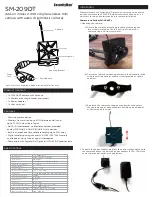
50
cable).
When using the A-frame to detect along the pipeline, insert the A-frame every three or
four steps. As you gradually approach the point of failure, the receiver signal will increase
and the gain will need to be adjusted to reduce the sensitivity of the receiver. If the signal
starts to increase, the detection speed should be slowed down, and each small segment
of the ground should be carefully checked to prevent ignoring the point of failure. The
receiver's strength value will continue to increase until there is a probe across this point of
failure. When the fault point is between the two pins, the current will decrease and the
reading value will approach zero. Adjust the gain and keep the readings at a higher value
while moving the A-frame. Moving about 30 centimeters each time until a minimum
reading is produced. At this point, the point of failure is between the two probes on the
A-frame
Illustration of Positioning Fault Point using A Frame
Illustration of A Frame reading
If the position of the pipeline cannot be determined during the fault point search, the
mode key needs to be pressed at this time and the working mode need to be switched to
the single horizontal coil, double horizontal coil or vertical coil to accurately position the
target pipeline. After the positioning is completed, press the mode button again to select
the external signal working mode and continue the fault point search.
Содержание HZ-5000
Страница 1: ...HZ 5000 Underground Cable Detector User Manual Huazheng Electric Manufacturing Baoding Co Ltd...
Страница 35: ...33 Figure a Illustration of Deeper Pipes Figure b Illustration of T Branch Pipe...
Страница 36: ...34 Figure c Illustration of the Pipe that Changes Directions Figure D Illustration of Detection of Pipe Ends...
Страница 37: ...35 Figure e Illustration of Detection under Steel Mesh Net Illustration of Depth Measurement...








































